Topverkoper. Snelle reactie, artikel overeenkomstig veilinginformatie en verpakking zeer goed.
Übersetzung ansehenNürnberger Mikroskop - 1800-1850 - Deutschland
Nr. 92798539
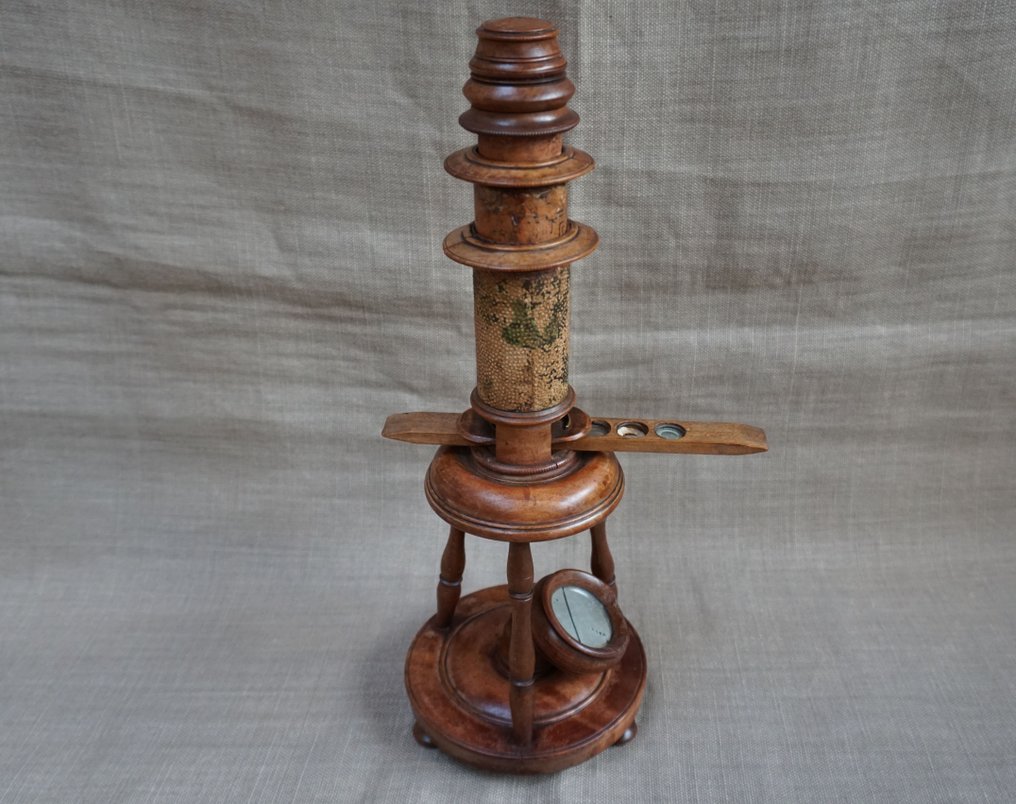
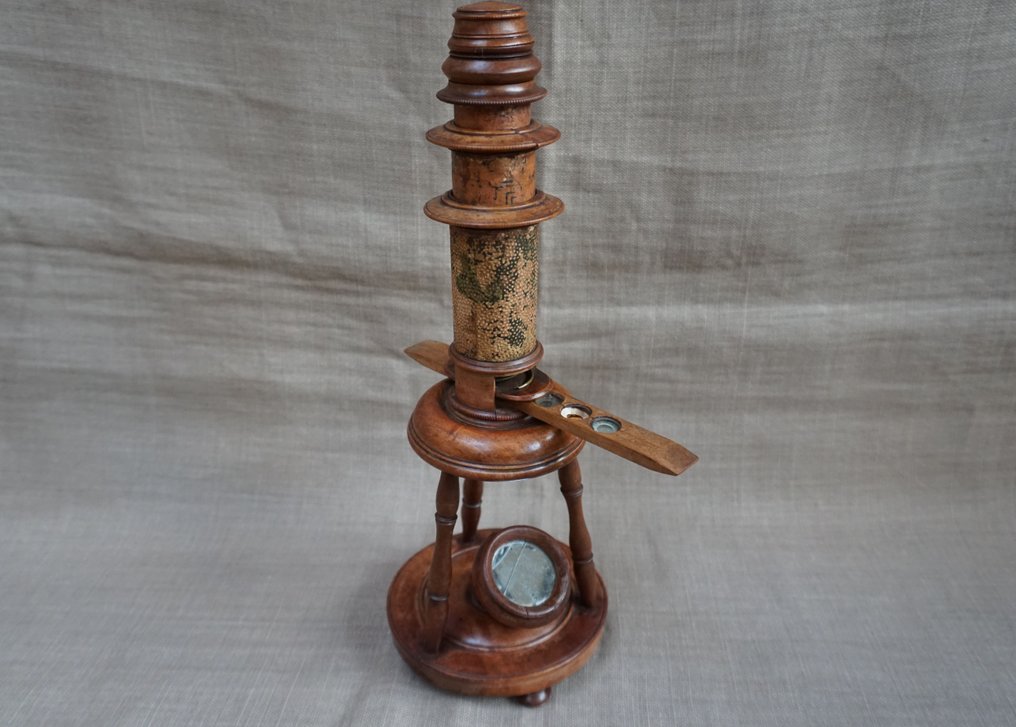
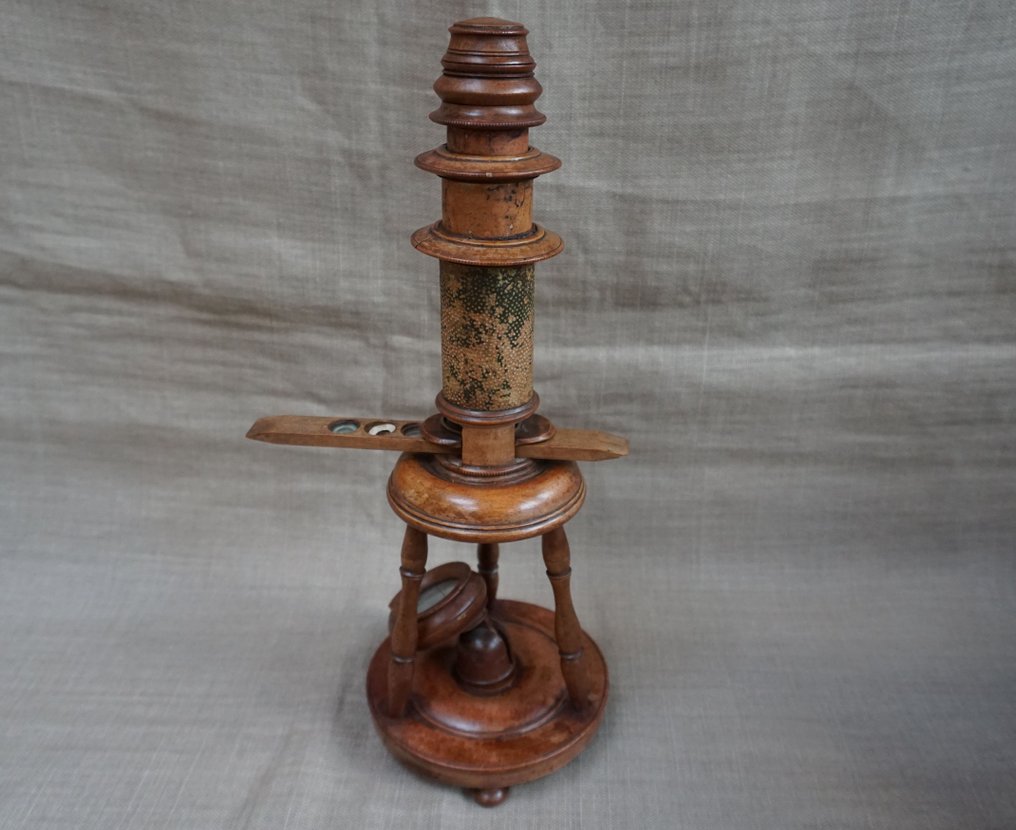
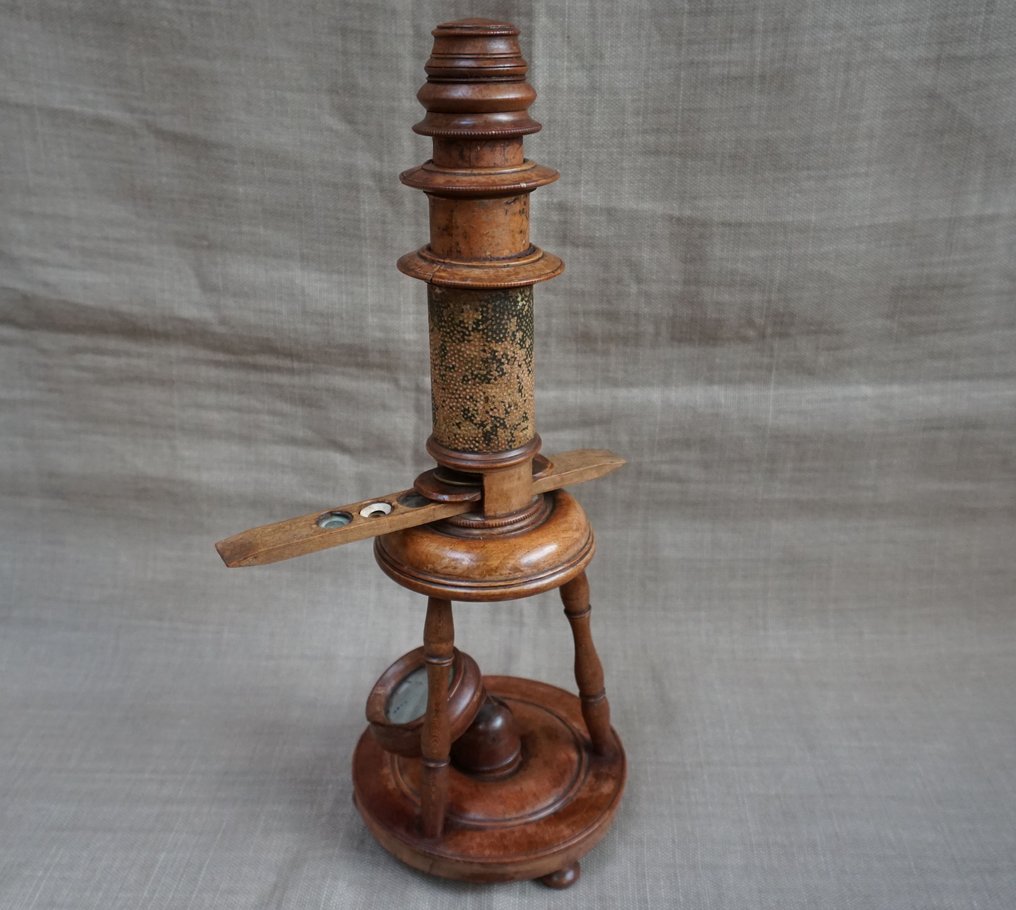
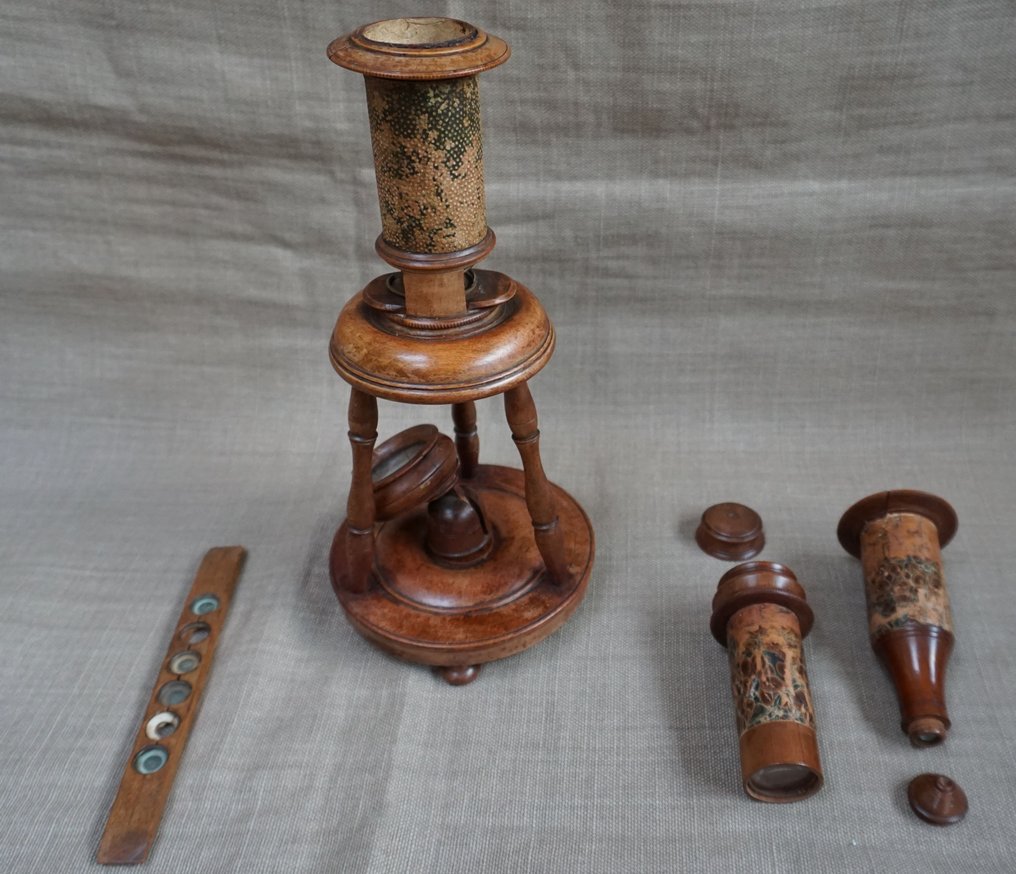
Very rare wooden Nuremberg microscope, from the early 1800s made in the south of Germany. It is remarkably complete and appears to be functioning, although not tested for magnification. It has a lovely mellow waxed patina, with some old repairs to the rings on the viewing tubes, also a crack in the glass on the reflective mirror on the base.
The term "Nuremberg microscopes" refers to a group of microscopes with very distinct stylistic characteristics, originating in areas of present-day southern Germany: Bavaria and the "Black Forest" area of Baden-Württemberg. Toy manufacturers specializing in woodworking have operated in these areas for centuries. The city of Nuremberg was known for its centuries-old tradition of fine engineering, which led to its nickname in the 16th century as the city of "Makers of the Compass." These manufacturers produced portable sundials, and in the 18th century, it was a centre for the production of toys and visual glasses in the German countries. The toy district in Bavaria, near Nuremberg, is particularly well known. It appears that the microscopes were offered as an additional product, sometimes adjacent to simple refractory telescopes. These were simple and inexpensive microscopes and telescopes made of lightweight materials, mainly from light fruit wood and cardboard, that did not pretend to be in line with the professional and very expensive brass instruments of their time, both mechanically and at their optical level.
In 20th-century research, there was a lively discussion about the period of production of Nuremberg's famous wooden and cardboard microscopes, many copies of which have been preserved in science museums and private collections. They were originally attributed to the second half of the 18th century. But studies from the 1980s onwards have shown that most of their production was during the late 18th century and into the first half of the 19th century, while telescopes continued to be manufactured into the first decades of the 20th century. The microscopes typical of this industry are a special category in the history of the microscope. The devices, which many of the historians of scientific instruments refer to as toy microscopes, could have been made at low cost and in large numbers and were successfully sold in the German lands of the era and beyond. Their optical quality was very basic and subject to considerable distortions (aberrations), and due to their defective optical properties were hardly suitable for serious microscopic examinations, even in their time.
Very rare wooden Nuremberg microscope, from the early 1800s made in the south of Germany. It is remarkably complete and appears to be functioning, although not tested for magnification. It has a lovely mellow waxed patina, with some old repairs to the rings on the viewing tubes, also a crack in the glass on the reflective mirror on the base.
The term "Nuremberg microscopes" refers to a group of microscopes with very distinct stylistic characteristics, originating in areas of present-day southern Germany: Bavaria and the "Black Forest" area of Baden-Württemberg. Toy manufacturers specializing in woodworking have operated in these areas for centuries. The city of Nuremberg was known for its centuries-old tradition of fine engineering, which led to its nickname in the 16th century as the city of "Makers of the Compass." These manufacturers produced portable sundials, and in the 18th century, it was a centre for the production of toys and visual glasses in the German countries. The toy district in Bavaria, near Nuremberg, is particularly well known. It appears that the microscopes were offered as an additional product, sometimes adjacent to simple refractory telescopes. These were simple and inexpensive microscopes and telescopes made of lightweight materials, mainly from light fruit wood and cardboard, that did not pretend to be in line with the professional and very expensive brass instruments of their time, both mechanically and at their optical level.
In 20th-century research, there was a lively discussion about the period of production of Nuremberg's famous wooden and cardboard microscopes, many copies of which have been preserved in science museums and private collections. They were originally attributed to the second half of the 18th century. But studies from the 1980s onwards have shown that most of their production was during the late 18th century and into the first half of the 19th century, while telescopes continued to be manufactured into the first decades of the 20th century. The microscopes typical of this industry are a special category in the history of the microscope. The devices, which many of the historians of scientific instruments refer to as toy microscopes, could have been made at low cost and in large numbers and were successfully sold in the German lands of the era and beyond. Their optical quality was very basic and subject to considerable distortions (aberrations), and due to their defective optical properties were hardly suitable for serious microscopic examinations, even in their time.
- 15
- 0
- 1
Snel verzonden, keurig ingepakt, het schilderij voldoet aan de beschrijving.
Übersetzung ansehenSchilderij snel opgestuurd en goed verpakt , Mooi schilderij
Übersetzung ansehenEnorm hartelijk ontvangst. Object zoals omschreven. Heeft nu een mooie plek aan de muur. Top!
Übersetzung ansehenObjet conforme à la description.Emballage soigné.
Übersetzung ansehenProduto em perfeitas condições, entrega super rápida
Übersetzung ansehenHerend serving dish is very very nice.Thx. best regards Anita
Übersetzung ansehenHurtig levering, alt var perfekt 🙂
Übersetzung ansehenHeel apart Indonesisch beeld gekocht dat supersnel en goed verpakt werd geleverd.
Übersetzung ansehenBertug
Übersetzung ansehenIf your order has arrived damaged, you can return it and request a refund from Catawiki.
Prettige communicatie en ben blij met de modelauto.
Übersetzung ansehenOttimo venditore, spedizione veloce,imballaggio perfetto 10+++++++
Übersetzung ansehenSupersnelle verzending. Alles perfect!
Übersetzung ansehenThank you
Übersetzung ansehenPerfect. Goed verpakt. En de omschrijving op de Catawiki site sluit 100% aan het schilderij. Kortom Top
Übersetzung ansehen- 15
- 0
- 1
Topverkoper. Snelle reactie, artikel overeenkomstig veilinginformatie en verpakking zeer goed.
Übersetzung ansehen